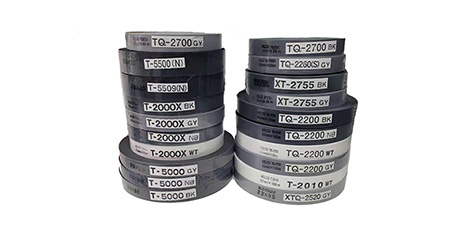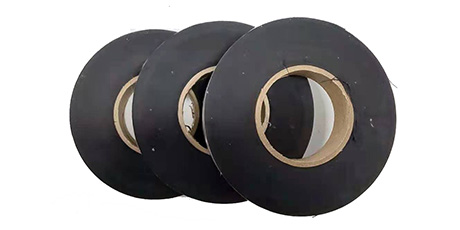Possess Sea Industrial Co., Ltd. - Drysuits Division
Professional Drysuit & Waders Manufacturer, Supplier and Exporter in China
Professional Drysuit & Waders Manufacturer, Supplier and Exporter in China
Contact: Ms.Maggie, Mobile / WhatsApp: +86 138 168 15888, E-mail: maggie@wetsuit.asia
Drysuit Seam Tape - Supplier
Depending on the material, the stitching position of the drysuit is usually use a heat sealing machine hot melt tape (hot tape) or glue rubber tape (glue tape) for waterproof reinforcement. We use Japan MELCO™, China and homemade products for hot melt tape, and Taiwan Butyltex® and homemade products for glue rubber tape. The hot melt tape and glue rubber tape can be cut into different widths according to different needs, and can also be made into a round or square shape for use when repairing drysuits.
Drysuit Hot Melt Tape (Hot Tape)
Explain: We use a heat sealing machine to weld the hot melt tape to the seam of the drysuit, which has achieved the purpose of waterproofing. This process is called hot tape. We can provide classic hot melt tapes made in Japan, such as MELCO™ T5000, as well as cheaper hot melt tapes made in China.
Note: Different fabrics are suitable for different types of hot melt tape, and the temperature control and feeding speed of the heat sealing machine need to be adjusted. The manual heat pressing effect of the digital temperature control electric iron is also good (for repairing).
Drysuit Glue Rubber Tape (Glue Tape)
Explain: Unlike hot melt tape, the rubber tape itself is not sticky. After processing the sewing thread and rubber tape with auxiliary glue and treatment agent, we use glue to glue the rubber tape to the seam line, which has achieved the purpose of waterproofing. This process is called It is a glue tape.
Note: This process is more complicated, and there are many types of glue and auxiliary agents, but its firmness and sealing are very good. Drysuits used for diving usually use this process to waterproof and strengthen the seams.
MELCO™ Hotmelt Tape:
| Model | Material | Hot pressing Temperature | Color | Features | Applications |
| TQ-2200 | 66-Nylon Tricot | 103℃ | White, Gray, Navy Blue, Black, Olive Green | Next Generation - Standard | Membrane Drysuit |
| TQ-2700 | 6-Nylon Tricot | Gray, Black | Next Generation - Thin | ||
| XTQ-2520 | Polyester Jersey | 90℃ | Gray | Next-Generation - Jersey | |
| TQ-2260 (S) | 66-Nylon Tricot | 110℃ | Gray | Next Generation - Thick | |
| T-2000X | 66-Nylon Tricot | 81℃ | White, Gray, Navy Blue, Black, Olive Green | Classic Standard | Membrane Drysuit |
| T-2010 | 6-Nylon Tricot | 80℃ | White | Classic Thin | |
| XT-2755 | 6-Nylon Tricot | 93℃ | Gray, Black | Non-Porous Membrane | |
| T-5000 | Wooly 6-Nylon Jersey | 95℃ | Gray, Navy Blue, Black | Elastic Cloth Tape | Neoprene Drysuit |
| T-5500 (N) | 6-Nylon Jersey with Polyacrylic Dots | Black | Non-Slip Diamond Dots | ||
| T-5505 (N) | Gray | Non-Slip Dots | |||
| T-5509 (N) | Black | ||||
Note: The hot pressing temperature is the direct hot pressing temperature. The working temperature of the heat sealing machine varies depending on the machine, the position of the air outlet, the feeding speed, etc., usually around 500°C.
Drysuit Type:
| Type | Neoprene Drysuit | Butyl Drysuit | Breathable Drysuit |
| Material | Neoprene Fabric | Butyl Fabric | Breathable Fabric |
| Process | Glue & Blind Stitch + Glue Tape | Flatlock Stitch + Glue Tape | Flatlock Stitch + Hot Tape |
| Firmness | Good | Good | Ordinary |
| Easy to Carry | Not Good | Ordinary | Good |
| Thermal Insulation | Good | Little | Little |
| Valve | Inflation Valve, Exhaust Valve | Inflation Valve, Exhaust Valve | No or Dump Valve |
| Applications | Diving | Diving | Water Sports, Rescue |



